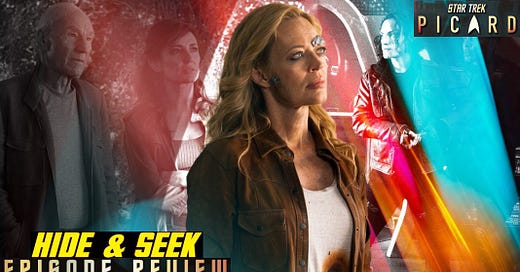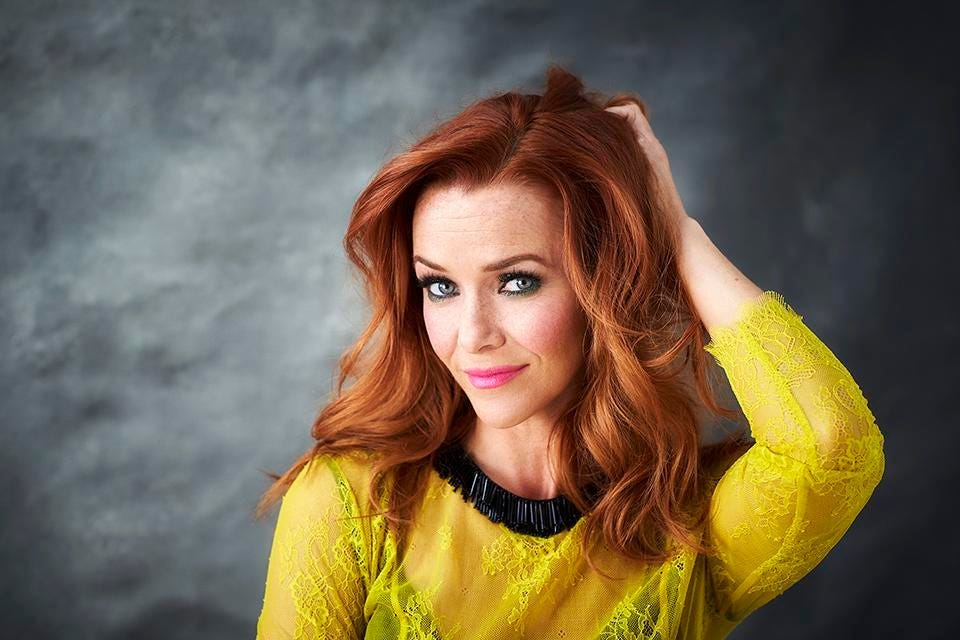
Star Trek: Picard
“Hide and Seek”
Season 2, Episode 9
Written by Matt Okumura & Chris Derrick
Directed by Michael Weaver
Starring Patrick Stewart, Orla Brady, Santiago Cabrera, Evan Evagora, Michelle Hurd, Alison Pill, Jeri Ryan, and Brent Spiner
Guest Starring James Callis, Steve Gutierrez, Sol Rodriguez, Dylan Von Halle, Annie Wersching, and Madeline Wise
50 minutes
Original broadcast 28 April 2022
1. The End is Nigh
Star Trek: Picard, in “Hide and Seek,” enters Year 2’s final stretch with enough poise to exist as an enjoyable, more-than-passable, yet flawed hour of television. Given the time-tripping drama that’s unfolded over the previous eight episodes, this familiar paradox may not prevent Picard’s Season 2 viewers from feeling surprised to encounter, in this penultimate installment, another apparent bundle of contradictions.
I say apparent because this segment hangs together surprisingly well, melding three distinct storylines into a cohesive-enough whole that I must acknowledge the efforts of writers Matt Okumura and Chris Derrick at tying together character beats, plot points, tones, and themes that, in this season’s middle four outings, don’t always gel, align, or synchronize as well as they should.
Although I’ve enjoyed each Year 2 episode so far, we shouldn’t lavish undue praise upon Okumura’s and Derrick’s labors or, for that matter, the work of their boss, showrunner Terry Matalas, who—partnering with co-creator and executive producer Akiva Goldsman to chart this season’s adventures—mixes (sometimes smoothly, sometimes roughly) multiple genres, moods, tempos, and tropes into an ostensibly serialized arc that nonetheless imports into Season 2’s long-haul narrative several single-shot elements from the franchise’s episodic-storytelling past.
Certain observers find this scattershot approach irritating to the point of annoyance, if not anger, with their accusations (of both bad faith and bad decisions) against Star Trek: Picard’s writers revealing a gloominess running so deep among certain so-called fans that we’d be hard-pressed to discover if they enjoy anything about the series beyond the questionable pleasure they derive from “hate-watching” it.
Matalas’s and Goldsman’s decision to literalize Admiral Jean-Luc Picard’s (Sir Patrick Stewart’s) doubts about his personal history into actual, visit-the-past time travel may imply that the entire galaxy’s fate revolves around the good admiral’s family (an unlikely prospect when considered in isolation), but this conceit’s major benefit dramatizes the joys and, especially, the sorrows that’ve made the gallant Jean-Luc into the thoughtful, moral, and emotionally reserved man so many of us came to love during his time on Gene Roddenberry’s Star Trek: The Next Generation (1987-1994) and in its four feature-film incarnations (1994’s Star Trek: Generations, 1996’s Star Trek: First Contact, 1998’s Star Trek: Insurrection, and 2002’s Star Trek: Nemesis).

Note, however, that Picard isn’t necessarily someone we’ve come “to know and love” over the past 35 years. Star Trek: Picard Season 2’s first eight segments, after all, unveil more truths about Jean-Luc’s childhood, especially his relationship with his parents, than all 186 hours—televisual and cinematic—of The Next Generation combined.
This ratio surely rankles longtime viewers who assumed that Picard, like so many television characters of his late ‘80s era, would remain forever preserved in amber, meaning that, once established, he wouldn’t change too much notwithstanding minor variations and even major developments wrought by his TNG experiences (none more traumatic than being assimilated by the Borg in writer Michael Piller’s brilliant “The Best of Both Worlds” two-parter that bridges this program’s third and fourth seasons).
Picard, in this formulation, isn’t so much a human being whose behavior shifts over the years as a stalwart cipher whose background only affects him when a particular episode’s storyline requires it. Jean-Luc, in other words, exemplifies the “changeless change” that network executives haven’t only accepted as axiomatic for most of American television’s commercial existence but also relentlessly forced upon the creative personnel in their employ, whether fiercely independent producers like Gene Roddenberry—who always wanted (or claimed to want) to buck the system—or more conformist workers like Rick Berman (Trek’s big-boss guru after Roddenberry’s 1991 death), who didn’t.
Other fans express dismay that Picard begins Picard’s inaugural season as a guilt-ridden recluse who’s retreated from galactic affairs after suffering the twin disappointments of his good friend Data’s (Brent Spiner’s) death in Nemesis and the Federation’s turn toward near-xenophobic isolationism following the planet Romulus’s destruction in the eleventh movie, 2009’s Star Trek, but Year 1’s ten episodes reveal Jean-Luc to be the resolutely ethical person we remember, albeit one now weathered by time, age, and upsetting political events that leave him stranded in a world he no longer fully recognizes or approves.
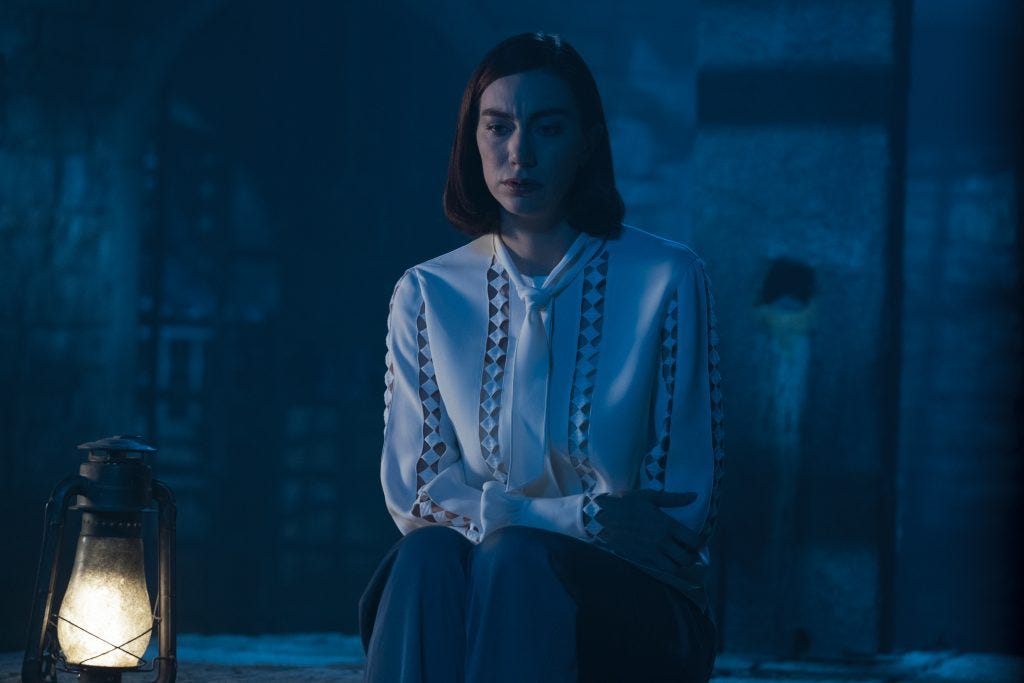
2. Mother, Mother in the Hall . . .
Year 2’s overarching narrative, as such, builds upon this dissatisfaction by seeing John de Lancie’s cosmic trickster Q return to challenge Picard’s private and public histories in what amounts to a 10-episode meditation upon TNG’s Season 6 magnum opus “Tapestry,” wherein Q forces Picard to realize just how precious life is by permitting Jean-Luc to amend several decisions that he (Picard) makes during his days as a Starfleet cadet, alterations that ripple forward in time to produce unhappy changes in the adult Jean-Luc’s destiny.
Given Year 2’s many developments, Okumura and Derrick have little choice but to continue excavating Picard’s past in “Hide and Seek.” Tying Jean-Luc’s childhood anguish to his adult mission (of erasing the fascistic Confederation of Earth future to which Q, in this season’s first two installments—“The Star Gazer” and “Penance”—consigns him) at least permits Episode 9’s title to accrue literal and figurative resonances after Jean-Luc and his La Sirena shipmates find themselves trapped in the Year 2024, searching Los Angeles, California for ways to escape the terrible alternate timeline they now inhabit.
Episode 8’s (“Mercy’s”) events force them to return to Château Picard’s French estate to defend their vessel from an attack by the Borg Queen (Annie Wersching), who’s not only infected and partially assimilated the body of Alison Pill’s Dr. Agnes Jurati (in Episode 5, “Fly Me to the Moon”) but also subjugated (in “Mercy”) a commando squad whose members become the Queen’s new drones. They pose imminent threats to our intrepid protagonists after these mercenaries beam to France to secure La Sirena as the first step in the Queen’s master plan of assimilating humanity four centuries before official first contact (as depicted in The Next Generation’s wonderfully harrowing Season 2 installment “Q Who”).1
This premise permits Okumura and Derrick to exhume Jean-Luc’s boyhood memories of his parents, Yvette (Madeline Wise) and Maurice (James Callis) Picard, in greater depth and detail than we saw in Episode 7 (“Monster”). The weeklong interregnum between these Picard-family forays may disrupt this subplot’s forward momentum, yet thankfully staves off this narrative thread’s implicit tragedy, which roars back into view as “Hide and Seek” unfolds. This development, moreover, inspires Patrick Stewart to deliver one of his best performances all year while giving director Michael Weaver free reign to fuse past and present into scenes of genuine visual cleverness.
Although well staged, Episode 9’s opening Borg assault is, inevitably, little more than a going-through-the-motions charade despite Weaver employing nighttime fog to symbolize Picard’s hazy boyhood memories. No matter how apposite such imagery may be, the Borg attack’s many suspenseful moments find the Queen’s commandos tracking our heroes throughout Château Picard’s darkened grounds and forcing Team Picard to split into three groups: first, Seven of Nine (Jeri Ryan) and Raffi Musiker (Michelle Hurd) skulk about the chateau’s ruins while dodging and debilitating the Jurati Queen’s newly Borgified drones while, second, Cristóbal Rios (Santiago Cabrera) spirits Dr. Teresa Ramirez (Sol Rodriguez) and her son, Ricardo (Steve Gutierrez), back to 2024 Los Angeles via Tallinn’s (Orla Brady’s) handy-dandy transporter at the same time as, third, Jean-Luc—with Tallinn in tow—flees into the château’s sprawling basement to avoid the Queen’s minions.
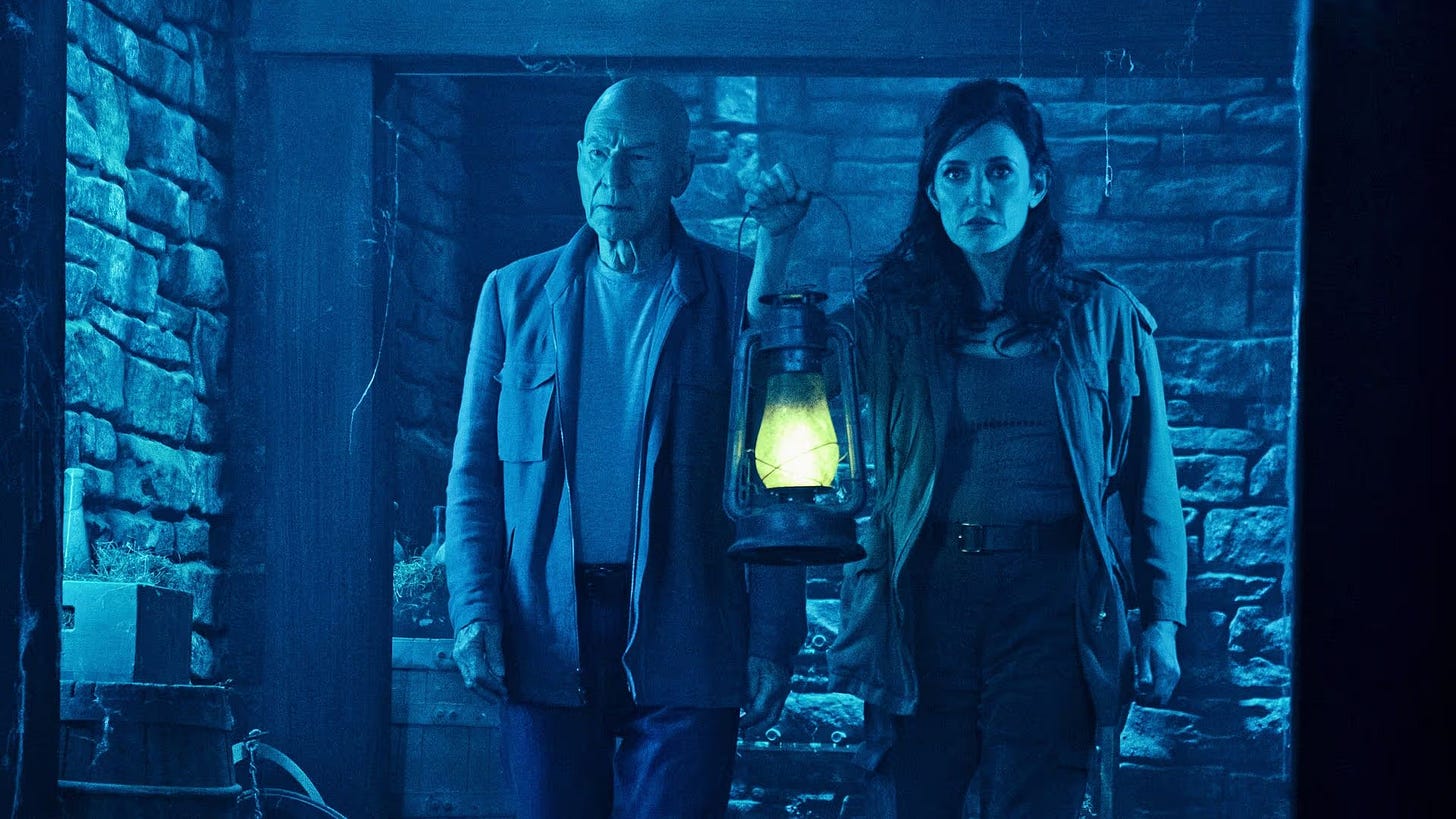
Patrick Stewart and Orla Brady adroitly play their scenes as the hunted (and haunted) quarry that they are. The Borg Queen’s commandos stalk them through the château’s cavernous subterranean passages, filled, in the best Gothic fashion, with locked rooms and secret tunnels. Jean-Luc and Tallinn, moreover, must suffer the hectoring banter of Dr. Adam Soong (Brent Spiner), the Data ancestor who’s so determined to scuttle the Europa Mission launch (that the Queen and Q, for different reasons, hope to thwart) that he (Soong) won’t relent no matter how many times Picard and Tallinn avoid him.
This life-and-death, cat-and-mouse ballet through Château Picard’s innards so clearly signifies the unearthed byways of Picard’s childhood remembrances that Weaver takes every opportunity to combine Jean-Luc’s youthful memories with his adult (i.e., 2024) life, to wit: We see Patrick Stewart-as-Picard and Orla Brady-as-Tallinn walking down a basement corridor while Jean-Luc narrates one of his past experiences before turning a corner and seeing Madeline Wise-as-Yvette passing behind them, after which we follow Yvette and Young Picard (Dylan Von Halle) enacting this memory.
Weaver visualizes how Picard’s past bleeds into his present by staging these sections of Okumura’s and Derrick’s teleplay with the skill of an old-school theatre director who knows precisely how to block his performers so that their every motion through the set (and, consequently, through the frame) becomes seamless. Simple as this effect may seem, it’s anything but, particularly given the terrible revelation that confronts Picard, Tallinn, and the audience when “Hide and Seek” reaches its final act.
This dramatic denouement, as gut-punching and shin-kicking as it may be, nevertheless revolves around a tired, indeed exhausted trope: the “crazy woman” who, being unable to bear the burden of her mental instability, ends the pain she feels by committing suicide.
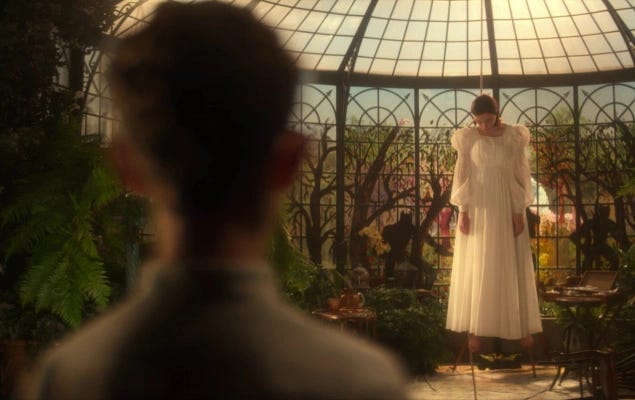
3. . . .Who’s the Saddest of Them All?
And not just any suicide: Yvette hangs herself after Maurice locks her in a basement room during a particularly challenging bout of mania. As my review (“Daddy Dearest”) of “Monsters” contends, this act of cruelty makes Maurice—once again played, with cultured gentility, by James Callis—into the unforgivable villain of Picard’s boyhood no matter how caring the man may claim to be, which certainly gives Jean-Luc good reason to refuse to mention his father during The Next Generation’s seven-season run and, in TNG’s beautiful Season 4 outing “Family,” for his brother Robert (Jeremy Kemp) to reveal that, while growing up, Robert was always “watching you (Jean-Luc) break every rule our father made and get away with it.”
This dialogue suggests that Maurice, despite his unbending refusal to allow 24th-Century technology (such as replicators) inside the château’s house and on its grounds, may have relaxed his stern attitude toward his younger son given the events chronicled in Picard Season 2. Akiva Goldsman and Terry Matalas, in other words, choose to expand Picard’s backstory by bringing context to the events seen in “Family”—significantly, one of only three times that we meet Picard’s relatives during TNG’s 176-episode run—without violating that program’s continuity despite concerns that neither Jean-Luc, Robert, nor Robert’s wife, Marie (Samantha Eggar), mention Yvette’s suicide during Jean-Luc’s return home.
These characters, after all, couldn’t discuss this terrible event since an entirely different creative team invents it three decades after “Family’s” production, but such a momentous development going unstated in “Family” doesn’t strike me as unusual, or even terribly curious, considering how unwilling so many families are about rehashing great tragedies. Discussing a parent’s suicide at domestic gatherings would be an unforgivably gauche breach of propriety and politeness where I’m from (and, perhaps, where you’re from, too), so Jean-Luc and Robert working out their brotherly tensions in “Family,” during which Jean-Luc begins—but only begins—sorting through the emotional wreckage of being assimilated by the Borg, seems exactly right even if, in 1990, writer Ronald D. Moore and TNG’s creative staff had already established Yvette’s suicide as part of Picard’s biography.
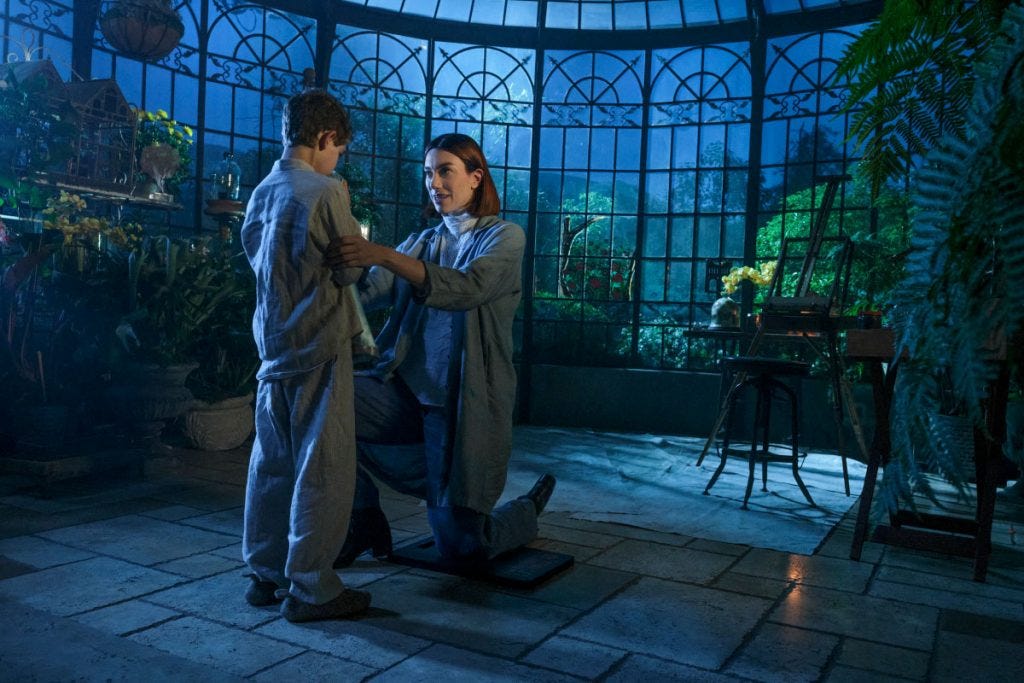
Yet the fact that Yvette takes her own life is, for me, a lazy way to explain Picard’s past because, by the time we reach Picard Season 2’s ninth installment, this plot has been “done to death” (pun intended) on American television, in American cinema, and in American literature. Slaying a female character to provoke a man’s emotional and spiritual development (or, worse, to incite his rage and, thereby, irrevocably change his way of life)2 is a trope now known as “fridging,” after comic-book writer Gail Simone’s website Women in Refrigerators, where Simone compiles a list of female characters killed off merely as plot devices (and cheap plot devices, at that).
This notion is equally useful when considering the effects of sacrificing a female character to unveil a man’s ill-fated childhood. Neither Matt Okumura, Chris Derrick, Terry Matalas, nor Akiva Goldsman need to kill Yvette—much less make her suicidal—to justify Jean-Luc’s fractured paternal relationship. The reasons provided by “Family” suffice, thank you very much, while Picard’s shock and sadness when, early in Generations, he learns that Robert and René (Robert’s son and Jean-Luc’s nephew, played in “Family” by David Tristan Birkin) have burned to death in a fire deepen his domestic feelings well enough that piling a maternal death onto Picard’s family trauma is overbearing, overweening, and pointless.
Or nearly pointless, since Yvette’s suicide provokes scenes of devastating emotional force thanks to Madeline Wise’s and Patrick Stewart’s superb performances, which elevate the clichéd material they’re given. Wise’s work has raised the quality of Year 2’s narrative project during every appearance by making Yvette’s mental instability authentic rather than pitiable, an effect that we shouldn’t minimize given how hackneyed the character’s fate is. Wise’s commitment to playing Yvette’s schizophrenia as sensitively as she does avoids the tics, twitches, and verbal explosions that would make Yvette stereotypically “crazy” even if, by the time “Hide and Seek” concludes, she’s a muted, less-stagy, and less-stodgy version of that same, old, stale type (who also seems to suffer the symptoms of bipolar disorder, a related-but-distinct illness).
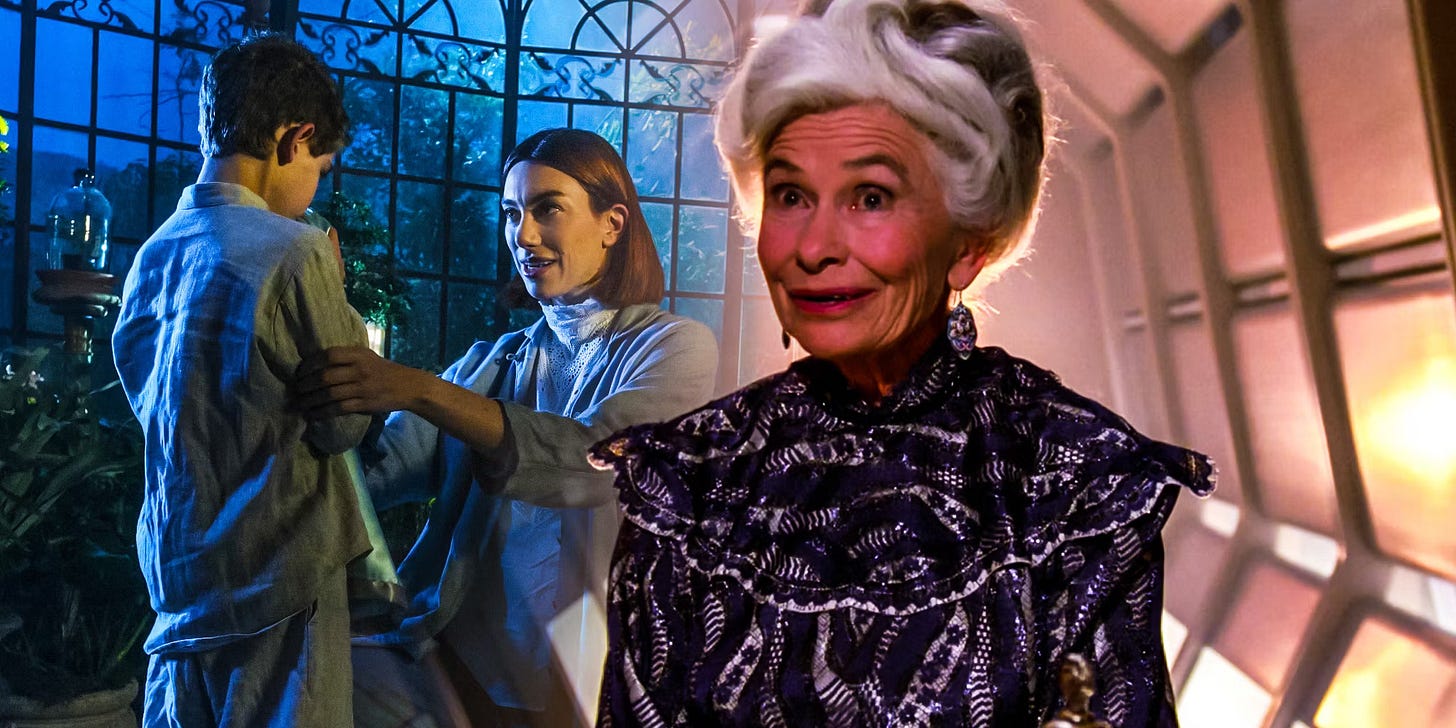
4. (Un)surprising, Yet Inevitable
The only saving grace—or, perhaps, barely saving grace—of Yvette’s fate comes in how her suicide retroactively complicates this character’s only appearance in The Next Generation. During TNG’s Season 1 outing “Where No One Has Gone Before,” after the U.S.S. Enterprise-D is propelled by a warp-engine test gone awry into a part of the universe where thoughts become reality, Picard, while striding down a corridor, encounters an elderly version of Yvette (Herta Ware) sitting at a table covered by a tea set. When the astonished Jean-Luc asks, “Maman?,” the catch in Picard’s throat reveals how poignantly seeing his mother again affects the good captain.
When Yvette tells her son, “We’ll have a nice, long talk,” Picard can only say what we would all say if we found ourselves in his circumstances—“This can’t be. You’ve been”—at which point Yvette cuts off her son to utter the words, “Dead? But I’m always with you. You know that” with such gentle wisdom and motherly affection that it makes you want to cry.
When I first watched this scene during its initial 1987 broadcast, my 15-year-old-rapscallion self almost did cry despite my mother being in the next room. That’s how powerfully Patrick Stewart and Herta Ware play this mother-son reunion for the 65 seconds it’s onscreen (assisted by Diane Duane’s & Michael Reaves’s—and an uncredited Maurice Hurley’s—top-notch dialogue, by Rob Bowman’s sensitive direction, and by Ron Jones’s haunting music). Commander Will Riker (Jonathan Frakes) then interrupts Picard when, from Riker’s viewpoint, he sees his captain talking to an empty corridor, causing Yvette, suffused by heavenly white light streaming from somewhere behind her, to vanish.
Upon re-watching “Where No Man Has Gone Before” while preparing this review (not quite seven years after my mother’s May 2017 passing), I unexpectedly burst into tears, not simply because Picard receives what I presume everyone who’s lost one or both parents wants (meaning, just a few more minutes to spend with them, to talk with them, and, simply, to love them in the flesh) but also because Picard imagines Yvette not as she was (i.e., a young, vibrant, yet troubled woman who takes her own life), but as she might have been had she lived (namely, a dignified, wise, and warm elder who never stopped loving her son).
I don’t know how long Patrick Stewart, Madeline Wise, Orla Brady, Dylan Von Halle, and Michael Weaver discussed this TNG scene when staging Yvette’s final “Hide and Seek” moments—as well as both the young and mature Jean-Luc’s reactions to them—or how much Matt Okumura, Chris Derrick, and Star Trek: Picard’s writing staff wished to connect these two scenes (separated by 35 years of production time and, by my estimate, roughly 50 years of story time), but these sequences flawlessly marry together. Dramatizing how profoundly Yvette’s death scars Picard’s psyche reveals how deeply Jean-Luc’s love for her runs, so deep, in fact, that he doesn’t discuss Yvette’s exit at all during The Next Generation. If Stewart and company didn’t expect faithful audiences to make these connections, they should—if ever asked about it—fib, obfuscate, and outright lie by saying that they did.
Once again, Star Trek: Picard offers such touching moments, scenes, and sequences of emotional heft that I can almost forgive “Hide and Seek’s” lapses. Almost, but not quite, since, in the end, Yvette’s suicide, no matter how movingly it resonates throughout Jean-Luc’s life, remains a narrative bridge too far for me to cross. Even so, Okumura and Derrick—almost miraculously, I might add—manage to connect Picard’s grief over the life his mother might have led to the experience of Agnes Jurati, whose losing battle with the Borg Queen’s assimilation of her (Jurati’s) mind and body sounds similar themes.
If we accept the Aristotelian notion that a drama’s conclusion should be surprising, yet inevitable, then “Hide and Seek” fails in terms of Yvette’s suicide (even if Terry Matalas and his writers, by foreshadowing this event throughout Season 2, don’t intend to surprise anyone). Yet they mostly succeed when Agnes, in this episode’s final minutes, persuades the Queen—who successfully commandeers La Sirena as the Borg assault on Château Picard continues—to meld their intellects and their physiologies into a single, hybrid being that I affectionately call “the Agnes Queen.”
“What’s surprising about that?,” astute readers might ask, since Star Trek’s been here before, with Agnes’s and the Queen’s fusion participating in a grand Trek tradition, one that recalls the visually and thematically spectacular conclusion of Star Trek: The Motion Picture, where Will Decker (Stephen Collins), executive officer of the refitted U.S.S. Enterprise (no bloody A, B, C, or D), and the ship’s navigator, Ilia (Persis Khambatta)—or, to be precise, an android duplicate of Ilia—bond themselves to the vast intelligence named V’Ger (itself a cosmically upgraded version of the fictional NASA space probe Voyager 6 that’s achieved sentience).
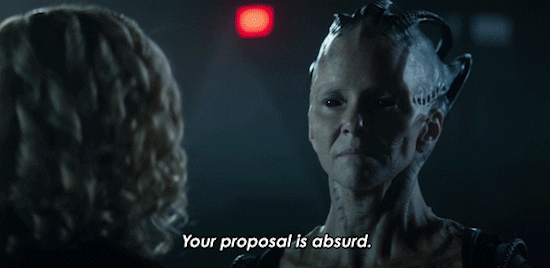
They become what Admiral James T. Kirk (William Shatner) calls “the beginning of a new life form” and what Science Officer Spock (Leonard Nimoy) considers “a birth, possibly a next step in our evolution.”
And who can forget Star Trek: Voyager’s Season 2 stunner “Tuvix,” which reverses the premise of The Original Series’s Season 1 entry “The Enemy Within” by seeing a transporter accident merge Security Chief Tuvok (Tim Russ) and Morale Officer Neelix (Ethan Phillips) into a wholly new person named—you guessed it!—Tuvix, played so fabulously by Tom Wright that he deserved an Emmy Award (whereas, in “The Enemy Within,” the transporter divides Captain Kirk into two separate beings, one noble and one savage, in a gonzo hour that demonstrates Shatner’s endless capacity for chewing, then munching, then devouring all available scenery).
“Tuvix,” from the moment it first aired until right now, as I’m typing these words and you’re reading them, has provoked so much fan debate, academic discussion, and philosophical outrage that it qualifies as one of the richest, most compelling, and most provocative entries not merely in the Trek franchise, but in any franchise (televisual, cinematic, or literary) anywhere.
As to “Hide and Seek’s” version of this plot, once again, splendid acting by Alison Pill and Annie Wersching makes it worthwhile. Matt Okumura and Chris Derrick wisely allow Jurati to win her internal fight against the Queen (remember, when we see Wersching’s Queen speaking, she’s a dramatic projection—or visualization—of Agnes’s interior dialogue, a conceit that Picard Year 2 indulges from Episode 5 onward) by alternately scolding and imploring the Queen to consider the benefits of cooperation, mutual trust, and building a Borg Collective that explores the universe rather than seeking to conquer it.
Yes, it’s trippy, idiosyncratic, and earnest enough to approach the threshold of absurdity without crossing that border. Or, phrased another way, it’s prime Star Trek, indeed some of the Trek-iest Trek we’ve seen all season. Plus, director Weaver, with generous help from editors Michael Benni Pierce and Sondra Watanabe, intercut Jurati and the Queen establishing their new modus vivendi with Rios saving Picard and Tallinn from Adam Soong just as Soong’s about to execute them.
Exciting, yes?
And did I forget to mention that, before Agnes convinces the Borg Queen to listen to her (Agnes’s) proposals, the Queen severely wounds Seven of Nine, whom she (the Queen) then begins assimilating in what amounts to a torture session that Raffi’s compelled to watch? Or that, after a few more minutes of bodily healing and meaningful discussion, Seven and Raffi permit the Agnes Queen to fly La Sirena away to assist her project of forming a new Borg Collective (or, perhaps, Borg Cooperative)?
So, in one sense, “Hide and Seek” has it all, ranging from the ridiculous to the sublime, from the objectionable to the agreeable, and all points in between. That’s not the cleanest bill of health to award this outing, but also not the dingiest. In another sense, “Hide and Seek”—despite laying the groundwork for Season 2’s finale (“Farewell”)—cannot fully satisfy this viewer because Yvette’s suicide remains as disappointing as it is objectionable.
This fictional catastrophe, however, is neither as untimely nor as regrettable as the real-life tragedy of knowing that we’ll never again see Annie Wersching play the Borg Queen (or any other role). On 29 January 2023, Wersching passed away from cancer at the age of 45, ending a terrific career much too early.
No matter what flaws we detect in “Hide and Seek,” I’ll forever remember this episode as the last time we’re blessed to watch Wersching play the Borg Queen as tremendously as did her predecessors in the role, Alice Krige (in First Contact) and Susanna Thompson (in Voyager). Wersching is terrific in “Hide and Seek,” as she is throughout Picard Season 2, making the Queen’s transition from enemy to ally everything that Yvette’s suicide isn’t: surprising and inevitable.
Jeri Ryan, after learning of Wersching’s death, posted to Instagram a commemoration of her co-star’s life and art that’s better than anything I could compose: “What a beautiful, bright light was lost today. I’m so lucky to have had the chance to work and play with the incredible Annie Wersching.”3
And how lucky we were—how lucky we are—to witness Wersching make the Borg Queen far more than a one-note villain, but, instead, a complex character played with admirable gusto and consummate skill.
Annie Wersching was aces, and always will be.
May she rest in perfect peace.
FILES
NOTES
Although Starfleet and the Federation first directly confront the Borg Collective in The Next Generation’s “Q Who,” set in the Year 2365, later productions reveal that a longer history between humanity and the Borg exists.
Star Trek: Voyager, in Season 4’s “The Gift” and “The Raven,” as well as Season 5’s tense two-part “Dark Frontier,” shows how Seven of Nine’s (née Annika Hansen’s) parents, in 2347, successfully petition the Federation Council on Exobiology to pursue long-term study of the Borg after rumors of this strange, cybernetic species reach the Federation, mostly due to encountering the survivors of planets whose populations have been assimilated (such as the El-Aurian refugees—including Whoopi Goldberg’s Guinan and Malcolm McDowell’s Tolian Soran—rescued by the U.S.S. Enterprise-B in Star Trek: Generation’s prologue).
The Hansens and their daughter board the U.S.S. Raven, a small research craft, before locating and trailing a Borg Cube to a transwarp conduit, then using this spatial tunnel to follow the Cube into the Delta Quadrant, where the Hansens study numerous Borg drones for three years before a subspace-particle storm damages the Raven in 2350, leading a Borg Cube to capture this Federation vessel and assimilate the entire Hansen family.
Star Trek: Enterprise’s Season 2 episode “Regeneration” shows that Starfleet unknowingly encounters the Borg when, in 2153, Arctic researchers uncover the debris and two dead drones from the Borg Sphere that Jean-Luc Picard and the crew of the U.S.S. Enterprise-E torpedo during Star Trek: First Contact’s fabulous opening battle sequence.
These corpses, however, revive once removed from the Arctic ice, then assimilate the research team and one of their shuttles, forcing Captain Jonathan Archer (Scott Bakula) and the crew of his NX-01 Enterprise to pursue and, eventually, to destroy this shuttle once they realize that the research team’s members, no longer being human, are beyond the help of any existing 22nd-Century medical technology.
The Borg never name themselves thanks to a garbled transmission that still permits the Enterprise crew to hear the classic lines “You will be assimilated” and “Resistance is futile.” These renegade Borg also transmit Earth’s galactic coordinates toward the Delta Quadrant, suggesting that this signal alerts the Borg to humanity’s existence and creates a predestination paradox that sets in motion the events of TNG’s “Q Who.”
NX-01 Science Officer T'Pol (Jolene Blalock) tells Archer that this subspace message won’t reach its destination for two centuries, if at all, causing Archer to comment, “Sounds to me like we’ve only postponed the invasion until what? The 24th Century?” as Brian Tyler’s musical score brings “Regeneration” to an ominous close.
As such, “Q Who” documents the Trek franchise’s official first contact with the Borg, but not humanity’s actual first contact with this fearsome opponent.
Why oh why, producers of Law & Order: Organized Crime? Why??

